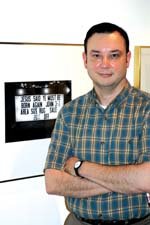Even as a child, Rene Paul Barilleaux knew he wanted to work in the arts. "Before first grade, I was always interested in drawing, making stuff and doing visual things," he says.
So it makes sense that Barilleaux, 46, has been the deputy director for programs at the Mississippi Museum of Art for the past 11 and a half years. Barilleaux oversees the museum's programs and exhibitions, and coordinates lectures, workshops, tours, summer art classes and after-school programs to help teach the power of art.
A young Southerner who left and brought back what he learned, Barilleaux was born and raised in Lafayette, La., and earned a fine arts degree in 1979 from the University of Southwestern Louisiana in Lafayette. He went to graduate school at Pratt Institute in Brooklyn, getting a master of fine arts, also in studio art, in 1981.
Barilleaux is especially interested in contemporary art (from 1980) and women artists. The museum has featured Valerie Jaudon and Mary Lovelace O'Neal; a Gwen McGee exhibit opens this month.
Though the museum has not grown space-wise since he's been there, Barilleaux says, "the collection has grown by nearly a thousand works" and has become "more audience friendly." Still, Barilleaux wants more working artists involved in the museum. "I'd like to see our audience diversify beyond being black and white, and become truly diverse. Looking at growing populations, I want our museum to encompass all of them," he says.
As for Jackson, Barilleaux points to "a new wave of younger artists who have started to make their mark here."
One problem is perception. "People see (museums) as quiet, reverential, library institutions. They don't see them as active, changing, progressive. We like to think we're moving in that direction," he says.
Part of being progressive, Barilleaux says, is getting outsiders to notice what Mississippi has to contribute to the world of art. "It's just as important for the arts community in Mississippi to look outside as it is for the outside to look at Mississippi."
The artistic world is starting to show a greater interest in the South, he says. "Because America is more and more centralized, people are looking out of the main urban centers. Since I've been here, I've never had anyone—artist, critic or curator—refuse me. They're all very interested in exploring what's here."



Comments
Use the comment form below to begin a discussion about this content.
comments powered by Disqus